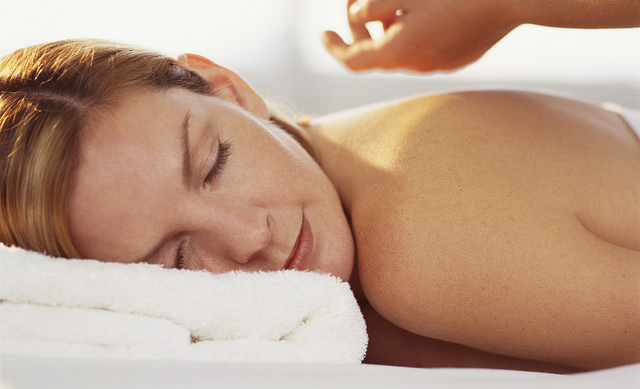
At the Fountain Valley Physical Medicine, we specialize in therapeutic massage, or as many people know it, deep tissue massage.
Therapeutic massage is a broad definition. Massage is the manipulation of superficial layers of muscle and connective tissue to enhance their function and promote relaxation and well-being. There are more than 80 recognized massage techniques, from Ayurvedic to Swedish.
So what does getting therapeutic massage mean?
Therapeutic massage is designed to relieve severe tension in the muscle and the connective tissue or fascia. The massage focuses on the muscles located below the surface of the top muscles. Deep tissue massage is often recommended for individuals who experience consistent pain, are involved in heavy physical activity, such as athletes, and patients who have sustained physical injury. At Fountain Valley Physical Medicine, our massage therapists use a variety of massage techniques to help the client work on a specific problem, whether it’s a sore hamstring, frozen shoulder, or intense stress. This may differ from a relaxation massage, where the therapist uses lighter pressure to help reduce stress and will likely provide a general, all over massage rather than targeting specific problem areas. Both are great; it’s a matter of what you want or need that day.
Deep tissue/therapeutic massage uses a variety of modalities to achieve the goal, including (but not limited to) Swedish, trigger point, and myofascial techniques.
How Does Deep Tissue Massage Work?
When there is a chronic muscle tension or injury, there are usually adhesions (bands of painful, rigid tissue) in muscles, tendons, and ligaments. Adhesions can block circulation and cause pain, limited movement, and inflammation. Deep Tissue Massage works by physically breaking down these adhesions to relieve pain and restore normal movement. To do this, the massage therapist often uses direct deep pressure or friction applied across the grain of the muscle.
What to Expect
Massage therapists may use fingertips, knuckles, hands, elbows, and forearms during deep tissue massage. You may be asked to breathe deeply as the massage therapist works on certain areas. It is important to drink plenty of water after the massage to flush metabolic waste from the tissues.
Because the therapist is working so deeply, it is not uncommon to feel a little sore after the massage, and in some cases to experience bruising. Often the therapist won’t know if they’re working too deep unless you say something. Open communication is critical. Every day your body is different, so what feels good one day may hurt the next. And, what one person calls deep tissue another will call light. The most important this is that you feel comfortable during your massage.
How Often Should You Get Massage?
Most people do well on a monthly schedule for their therapeutic massage, but how often you should do it depends on what is going on with you physically and your budget. We often see clients who come in once or twice a week for a few months to address a specific problem, and then switch to a monthly schedule.
What we do know is that once or twice a year is not frequent enough for you to see the long-term, positive benefits of incorporating massage therapy into your wellness routine. To see sustained benefit, six weeks is really the maximum amount of time you should go between massages.
How Does Deep Tissue Massage Feel
The pace of a Deep Tissue Massage is generally slower or more down-tempo. A Deep Tissue Massage is very relaxing. The pressure applied is moderate to deep. With Deep Tissue Massage the deep pressure is not applied immediately. The area being worked is first warmed-up (worked gently) and as it softens and allows the therapist access, then, the pressure increases.
Another distinguishing feature of Deep Tissue Massage is specific work. The most common specific techniques used in Deep Tissue Massage are Friction and Stripping strokes. Friction is applies across the width of a muscle. Friction technique is applied by rubbing the muscle from two opposite directions at the same time or a single direction, often alternating back and forth (left then right). Stripping Strokes follow the length of the muscle from Origin (start) to Insertion (end). Stripping is the number one technique applied in Deep Tissue Massage. The pressure applied sinks to the level of tension.
Do I HAVE to be undressed for a Deep Tissue Massage?
NO: Your Deep Tissue Massage is best enjoyed while only partially undressed; however you are always draped and only the areas being worked on are uncovered. Be sure to let your therapist know if there is any part of your body that you DO NOT want to be massaged. Our trained massage therapists strive to respect your boundaries while giving you the most therapeutic massage possible.






